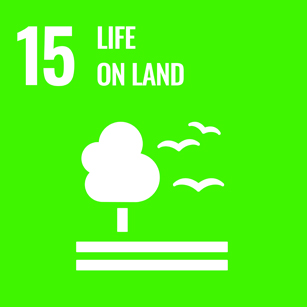Rural Futures: Habitat restoration in the Northeast
- Proposed areas of implementation
- Potential areas of implementation
Project Partner





The proposed intervention by the Balipara Foundation addresses the interconnected challenges of forest degradation, climate change, and poverty by creating economic opportunities for rural and indigenous communities. Through initiatives such as forest restoration, agroforestry, and sustainable livelihoods, the program generates income for communities, leading to improved well-being and reduced reliance on forest resources. This approach contributes to climate change adaptation and mitigation, benefiting human and ecological well-being in the long run.
The project expands the Balipara Foundation’s ongoing work in Assam and Nagaland to also encompass new geographies in Arunachal Pradesh and Manipur. The proposed project areas are located within reserve forests and are managed by local forest fringe communities. The primary beneficiaries are rural and indigenous forest fringe communities, particularly smallholder farmers heavily dependent on forests and natural resources for their livelihoods.
Anticipated benefits for climate and nature include the restoration of vital habitat corridors, improved ecological health, water replenishment, flood damage prevention, carbon sequestration, grassroots leadership in natural asset management, and enhanced climate resilience. Additionally, the intervention offers socio-economic benefits such as employment generation, sustainable livelihoods, gender equality, improved quality of life, and increased adaptive capacities for the communities involved.
Context
The North East Region (NER) of India, comprising the states of Assam, Arunachal Pradesh, Manipur, Meghalaya, Mizoram, Nagaland, Tripura, and Sikkim, is a mega biodiversity center and hotspot. This region, covering 7.7% of India’s total geographical area, exhibits remarkable biodiversity across species and ecosystems. The NER is home to diverse flora and fauna, including 31.58% of endemic plant species out of the 8,000 known species. With a population of 46 million, the rich biodiversity of the NER holds significant socio-economic and developmental value for local communities.
The NER faces significant ecological challenges due to various anthropogenic pressures; such as population growth, economic production, and consumption behaviors. These activities, including fossil fuel burning, chemical fertilizer use, overgrazing, timber harvesting, agricultural expansion, and pollution, have detrimental effects on natural and human systems leading to soil erosion, water scarcity, poor water quality, landslides, and rapid loss of habitat and genetic diversity.
In addition to these anthropogenic impacts, climate change poses an additional stressor to the region’s ecosystems and communities. The Eastern Himalayas have experienced temperature increases and variable annual precipitation changes over the past few decades. These changes have resulted in reduced snowfall, glacier retreat, altered river basin flows leading to floods or water scarcity, contraction of wetlands, and shifts in agricultural seasons. Climate projections indicate a trend toward further warming and changes in precipitation patterns.
To address these challenges, a scalable and localized action framework is required for the regeneration of natural capital, with communities playing a central role in habitat restoration and management. This approach can lead to the creation of sustainable habitats and livelihoods, increasing incomes from natural-resource-dependent sectors such as agriculture, livestock, non-timber forest produce, and fishing.
In 2017, the Balipara Foundation launched the Rural Futures programme, which has positively impacted over 20,000 people and manages over 5400 hectares of forests. The proposed project builds upon the ongoing Rural Futures program and recognises the importance of a dynamic approach tailored to specific environments. Balipara Foundation is committed to ensuring that all agroforestry and restoration practices are scientifically sound and in harmony with the local ecology, while also being community led and addressing community needs.
Key learnings from the foundation’s work emphasise the importance of community engagement beyond plantation efforts, making communities stakeholders in restoration projects by leveraging their traditional knowledge. The foundation also focuses on building young community leaders who can advocate for conservation efforts, collaboratively designing impact monitoring frameworks, and creating experimental and iterative restoration designs that address specific ecological and climatic vulnerabilities.
Through ongoing community engagement, the foundation has witnessed the tangible adverse impacts of climate change on various communities across different ecosystems and locations. These insights inform the foundation’s projects to be more responsive to immediate needs. For instance, planting trees with deep-reaching roots and protecting planted areas with bamboo fencing to prevent soil erosion in riverine islands; and promoting agroforestry to help communities diversify their crop incomes and build resilience against unusual heat and unpredictable weather patterns.
By addressing the challenges faced by communities in the NER and integrating sustainable practices, the Balipara Foundation’s efforts contribute to mitigating and adapting to the impacts of climate change and fostering sustainable development in the region.






Problem statement
The proposed project addresses multiple interconnected challenges in the Eastern Himalayas and the North East Region (NER). These challenges include the loss of green cover, forest degradation, desertification, water scarcity, floods, declining soil health, and declining agricultural yields.
Since 2000, the Eastern Himalayan region has lost over 9.5% of its green cover. This loss exceeds the combined area of Bhutan and the state of Sikkim. According to the State of Forest Report 2021, the total forest cover in the NER is 1,69,521 sq km showing an overall decrease of 1,020 sq km as compared to the previous assessment in 2019. Arunachal Pradesh witnessed the highest loss, with a reduction of 257 sq km of forest cover. Manipur and Nagaland have lost 249 sq km and 235 sq km respectively. Assam, Mizoram, and Meghalaya have also experienced significant forest cover decline, with losses of 107 sq km, 186 sq km, and 73 sq km, respectively. However, these figures do not capture the full complexity of the picture: the loss of primary and dense natural forests, the conversion of forests into plantation forests, and the incursion of invasive species in natural forest areas. These factors have created a cascading series of effects: declining ecosystem health, declining soil health, rising desertification, and the rapid depletion of water tables across the region.
Climate change has exacerbated these challenges by altering rainfall patterns, leading to prolonged dry periods, and increased frequency of extreme weather events. Consequently, desertification and water scarcity have intensified, and devastating floods have become more frequent, particularly in Assam, India’s most climate-vulnerable state. Assam spends an average of Rs 200 crore annually on flood damages, and over 50,000 people were displaced by floods in 2019 alone.
Additionally, 80% of the population in the region relies on nature-dependent industries such as agriculture, forestry, fuelwood-based energy production, and tourism. Poverty is widespread, especially in the valleys, where deforestation and climate risks pose a significant threat to livelihoods. Poor rural incomes force communities to exploit forests for income generation and basic services, perpetuating a vicious cycle of forest loss and degradation. Climate change risks and the degradation of the environment have exacerbated the vulnerability of already fragile nature-based livelihoods, pushing communities further into poverty.
The interconnected problems of declining forests, ecological degradation, climate vulnerability, and poverty pose significant challenges to livelihoods and climate resilience in the region. Addressing these challenges requires a comprehensive approach that breaks the vicious cycle of degradation and links healthy ecosystems with improved livelihoods for rural and forest-fringe communities.
Goals and objectives
The primary goal of this project is to address and tackle the intertwined issues of forest degradation, climate change, and poverty by creating economic opportunities for rural and indigenous communities through forest restoration, agroforestry, and other sustainable businesses. By generating income through these activities, communities gain agency to improve their well-being and reduce their dependence on forest exploitation for income and basic needs. Forest restoration and agroforestry play a crucial role in adapting and becoming resilient to, and mitigating climate change in the following ways:
Resilience of forests and farmlands to climate risks:
Forest restoration and agroforestry play a crucial role in adapting and building resilience to climate change. In many communities supported by Balipara Foundation, forest loss has resulted in increased land degradation, soil erosion, and floods. By restoring native species with deep-reaching roots, forest-fringe communities in the Brahmaputra valley can effectively reduce the risks of soil erosion and floods in the long term. Similarly, for forest-fringe communities residing in the hills of Nagaland and Manipur, the focus is on restoring native tree species that facilitate groundwater replenishment and watershed restoration. This restoration effort ensures year-long access to streams prone to drying out due to unpredictable monsoon conditions.
The project also emphasises agroforestry activities as part of its strategy. When implemented on a large scale, with a suitable mix of tree and shrub species, agroforestry enhances the resilience of agricultural land against extreme weather events like floods and droughts, thereby aiding adaptation to climate change. Additionally, the presence of trees in agroforestry systems serves as a natural barrier against soil erosion, while improving soil health through increased organic matter and nutrient content. Moreover, the roots of trees help break up compacted soil, allowing water to penetrate more easily.
Carbon Sequestration:
Carbon sequestration is a crucial aspect of the project. Forest ecosystems have a greater capacity to sequester more carbon in the long run compared to timber plantations. Balipara Foundation’s habitat restoration follows this principle by focusing on biodiversity and tree plantation that replicates the nearest core natural forest. This approach allows for the full-scale restoration of ecosystem services provided by trees and wildlife species, ensuring high-quality carbon sequestration over time.
Agroforestry also has significant potential to mitigate the effects of climate change. In the short term, it contributes to microclimate moderation and natural resource conservation. In the long term, agroforestry species have been found to sequester as much carbon in below-ground biomass as primary forests, surpassing crop and grass systems. Moreover, agroforestry systems typically require less synthetic fertilizer use compared to conventional agriculture, resulting in reduced emissions of nitrous oxide (N2O), a potent greenhouse gas (GHG). Farmlands can be transformed from carbon emitters to carbon sinks by promoting agroforestry practices that support biodiversity.
To assess the biomass content of the planted trees, diameter-at-breast-height measurements are conducted using a sampling method. Based on these measurements, carbon sequestration projections are calculated.
Economic resilience and improved livelihoods:
Agroforestry systems provide farmers with multiple sources of income; including food, fodder, fuelwood, fiber, medicinal plants, timber, and other wood-based products such as cork and wood pulp. Implementing agroforestry practices can significantly increase community incomes within the first year, and by the third year, when tree crops mature, it more than doubles their earnings. The higher earnings from farmlands enable communities to invest in their households and small-scale community infrastructure. This economic stability helps communities withstand the challenges posed by climate risks like flooding and extreme weather events. Agroforestry, therefore, plays a crucial role in enhancing food and nutritional security, overall employment, and income generation through natural-resource occupations.
About the organisation
The Balipara Foundation was established in 2007 and has been rewilding forests in the Eastern Himalaya since 2016. The organization achieves this through its Rural Futures model for rewilding forests and agricultural lands, while creating incomes that allow communities to pursue their wellbeing aspirations. Over the years, the Balipara Foundation has built strong networks with both local governments and forest departments, as well as with national and international businesses keen on furthering the cause of sustainability and emissions reduction nationally and globally. As of 2022, the Balipara Foundation manages over 7000 hectares of restored forest land, with over 7 million trees, and positively impacting over 16,000 people through direct implementation and capacity building for managing and monitoring restored forest lands. The organisation is a member of the Circular Bioeconomy Alliance of King Charles III’s (formerly HRH the Prince of Wales) Sustainable Markets Initiative, with its Rural Futures model being adopted as a living lab experiment in building a circular bioeconomy in the Eastern Himalayan region, through community-led reforestation and agroforestry for sustainable businesses, including the launch of sustainable fashion landscapes through the SMI’s Sustainable Fashion taskforce.






